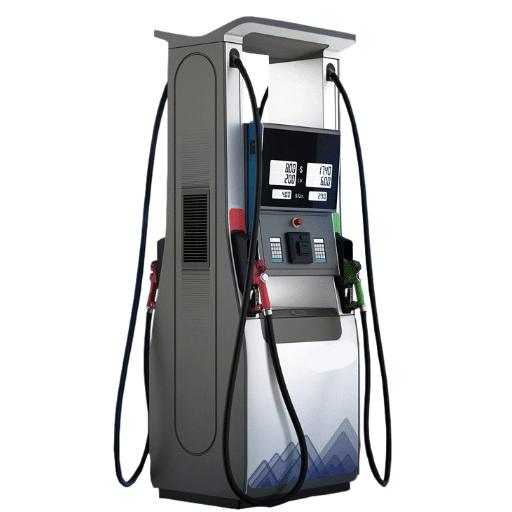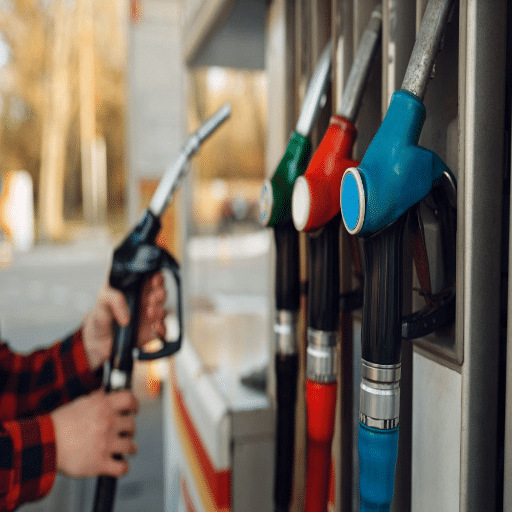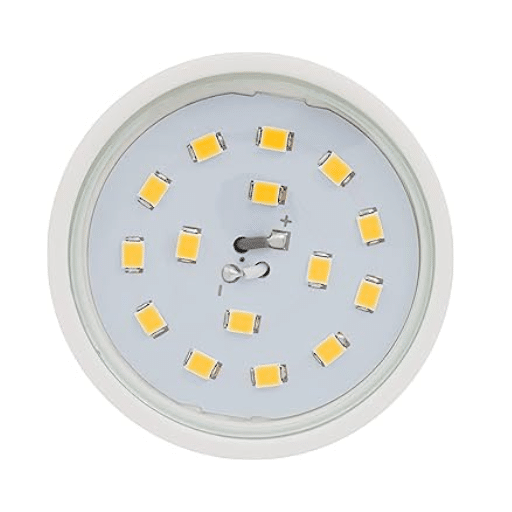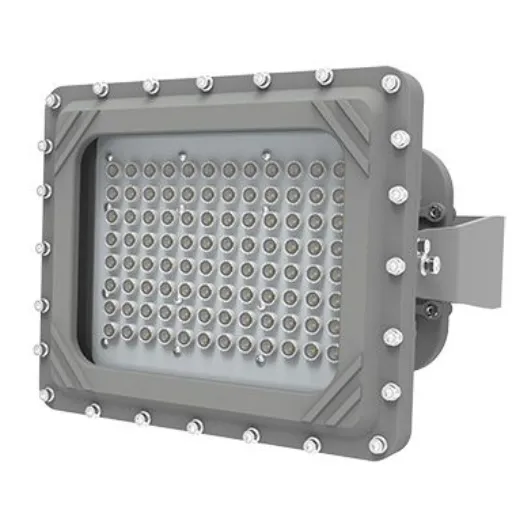Fuel dispensers sit at the heart of every filling station, enabling drivers to top off their tanks on the go. Even so, the devices are not uniform; they break down into a few major categories, with mechanical and electronic models topping the list. Each type boasts its engineering principles, operating quirks, and customer interactions. Grasping those nuances often saves businesses and motorists time and expense at the pump. The following paragraphs profile the core design differences, shortlist each style’s advantages, and point toward the criteria most likely to guide a sensible purchase decision.
What is a mechanical fuel dispenser? How does it work?

The primary function of a below-grade storage tank is to provide a constant discharge at the required operating pressure. It is hermetically attached to the process gas pipeline or designed as a stand-alone, low-pressure receptacle. It also stores gas in the desired quantity until the line is opened, requiring a considerable amount to discharge. The tank must have sufficient capacity to store gas under the necessary pressure to achieve this effect.
Understand the working principle of the mechanical refueling machine.
A mechanical refueling unit employs straightforward hydraulics to achieve accurate volume tallies while transferring product. Central to the apparatus, either a suction or rotary pump lifts liquid from a buried reservoir. The stream then navigates a cascade of electronically actuated valves and particulate filters that stabilize pressure and strip out particulates so only clean fuel enters the delivery hose.
The metering device is essential in many fueling setups; operators frequently rely on a positive-displacement variant that logs the precise volume passing by. Inside the unit, a clutch of chambers or rotating gears breaks the stream into manageable increments, then a tallying mechanism tallies the total. Mechanical counters link directly to this assembly, their teeth-and-spring matrix converting the fuel’s motion into visible digits.
Makers often specify stainless steel or premium aluminum because both metals shrug off corrosive compounds and withstand the abrasive dust daily on busy aprons. Field audits of comparable hardware regularly report accuracy within ±0.2 percent, which speaks to the tech’s rugged efficiency outside digit-heavy grids. These elements empower a mechanical refueling rig to deliver repeatable, low-maintenance service amid the world’s far-flung work sites.
The role of the carburetor in the mechanical refueling system
The carburetor remains a cornerstone component in any mechanical refueling arrangement. It governs the fuel-to-air ratio, a balance vital for clean, powerful combustion inside a conventional internal combustion engine. Get that mix right, and the motor will respond with vigor and thriftiness.
In field deployments, from busy airport tarmacs to remote drilling rigs, engineers now favour finely machined carburetors that shrug off sudden shifts in pressure or temperature. Trials show that units holding their calibration can boost fuel economy by 10 to 15 percent while continuing to keep exhausts relatively mild.
Recent design tweaks- sleeker float-chamber profiles, reshaped jet needles, tighter venturi throats- have further sharpened the atomization of the incoming gasoline mist. The result is a steadier idle, less spill during peak loading, and by extension, greater system dependability. Across these varied settings, the humble carburetor quietly upholds mechanical refueling technology’s economic and ecological promise.
Common problems: air blockage and low-pressure problems
Air blockages and low-pressure shortcomings keep surfacing in carburetors, sapping engine muscle each time. A thin dust or oil film skim can seal off the air intake or clog the internal ducts. When that happens, the crucial blend of fuel and incoming air goes haywire, and power drops. Mechanics usually estimate that a single narrow choke cuts output by 10 to 15 percent, so a clean filter or quick flush is rarely optional.
Low-pressure stories unfold nearer the fuel side, where float pins, gaskets, or aging O-rings play referee. Once seals give, the pressure curtain shrinks, fuel dribbles instead of gushing, and idle speed starts auditioning for a metronome. Misfires and stalls become routine in that shaky world, especially at wide-open throttle. Laboratory tests and field data have pegged the consumption hit at roughly 20 percent once regulation goes soft. Tight torque on every flange and an eye for worn pieces tend to keep such headaches out of the shop.
How do electronic fuel dispensers work?
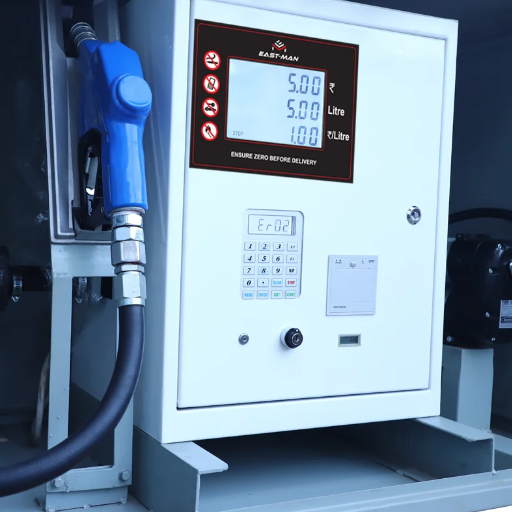
When active, the electric motor pumps fuel from the fuel storage to the nozzle, with the pump connected to the fuel storage compartment. In the process, the flow meter gives an accurate reading of how much fuel has been dispensed and saves the data in the memory of the fuel dispenser. Once the information has finished compiling, the control unit sends this data to the display, totaling the information and presenting the attendant with applicable purchase prices. Trade margins are ultimately calculated against the amount of fuel consumed. A set of sensors and valves is utilized. Avoid overfilling when fueling and product use, which may lead to an explosion.
Electronic fueling system explained.
The electronic refueling system combines hardware and software to run efficiently, accurately, and more importantly, securely. This system involves sensors that detect a precise fuel level and the level achieved at that moment (real-time), controlling the distribution to ensure no oil wastage through leakage. The other fueling systems incorporate flow meters; the quantities dispensed are displayed on a digital screen, along with the actual cost. Additionally, they come with shut-off valves to enhance the process of fuel dispensing and to reduce the amount of spills and leaks. Pay stations have been incorporated with the recent fueling systems, making purchasing more reliable and easier. Through state-of-the-art technologies and safety designs, the fueling systems have mainly contributed to satisfying fueling expectations from users and operators.
Importance of Fuel Pressure Regulator in Electric Fuel Pumps
Fuel pumps do not decide their fate; they obey the orders of a fuel-pressure regulator. By blocking or opening a small passage, the device steadies the fuel bar that flows toward the engine, matching the pump’s hurry to the engine’s appetite. A steady press keeps the air-fuel mix stable, and a shaky one commonly divorces the mixture, spawning misfires, sluggish throttle response, and, at worst, unplanned stall-outs.
Electronic engines, with their feast-or-famine demands, laugh at yesterday’s gizmos. So many modern regulators auto-adapt to pressures that hover near 300 bar for direct-injection setups. Studies back the claim with a hard number, crediting the regulator with a potential 15-per-cent improvement in fuel mileage; fall short of that norm, and the pump guzzles without purpose.
If you skip the routine check, a worn valve can turn precious gasoline into vapor, a loss measured in dollars, and a smoky dollar bill drifting into the air. Schedule expert eyes on the component, swap it when certainty blurs, and emissions drop while the engine clock ticks on. Manufacturers fuse better rubber seals with precision housings, hoping the upgrades stave off leaks and keep the pump-press governor relevant for another decade.
Integration with Fuel Injection Systems
The fuel pressure regulator quietly sits at the heart of most late-model fuel-injection setups, even if few drivers acknowledge its daily contribution. Shunting surplus gasoline back to the tank keeps the rail pressure steady so the injectors can meter fuel accurately through every corner of the throttle. Without that constant moderation, combustion would wobble, the economy would tumble, and hesitation on a stern ramp would be the least of an owner’s worries.
Tech marches onward, and so do the tolerances. A variance of just 1 or 2 psi in an electronic-control loop can ripple through startup smoothness, weight-of-the-pedal feel, and overall mileage figures; engineers routinely cite potential efficiency gains of nearly 10 percent whenever pressure dances within that tight band. Even high-octane applications have grown accustomed to 60 psi or more, compelling manufacturers to outfit the regulator with beefier springs, smarter diaphragms, and, in some cases, a bit of onboard electronics.
Automotive innovators are increasingly adopting returnless fuel systems to keep fuel cooler as it circulates. Sophisticated pressure regulators embedded in those layouts help trim fuel consumption and evaporative emissions. Engineers routinely cite that the regulator now serves as a fulcrum, balancing fuel injection timing, governing tail-pipe output, and upholding the engine’s daily dependability.
Mechanical vs. electronic fuel dispensers: main differences
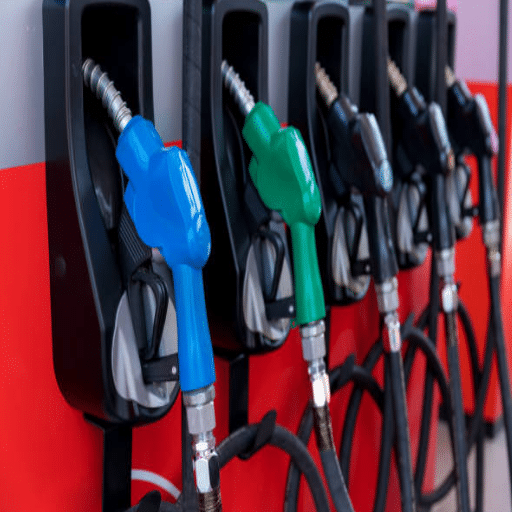
The functioning of an analog gas pump depends on the creative works of individuals and the transfer of gas with the help of specific gears, handles, or similar parts. They are very clear for use and are rarely required to be maintained or repaired; however, they are not very accurate. In contrast, the latest electronic pumps use sophisticated sensors and computerization to give precise accuracy in dispensing fuel to the customers. Some of their functionalities include advanced payment systems and a constant online monitoring configuration. Due to cost constraints, the most common way of refueling cars is through mechanical fuel dispensers suitable for most small-scale businesses. On the other hand, electronic dispensers are helpful since they are swift and suitable even for high-pressure situations like congested traffic or very crowded modern facilities with many vehicles waiting to be refueled.
Comparison of fuel dispenser pressure and efficiency
Fuel dispenser performance hinges on pressure and efficiency, which greatly matter to busy service stations. Classic mechanical pumps, found in less hectic settings, usually run at lower pressures and feel almost two-dimensional by comparison. Their gears and levers simplify maintenance and yield dependable service, yet the modest pressure ceiling slows flow just when drivers want to top off and move on.
Brand-new electronic models tell a different story: they push fuel through the hose at noticeably higher pressures, sometimes registering 10 gallons per minute on the display. That is almost double what any mechanical rig could manage, and the time saved queues speak for themselves. Integrated flow controllers, now commonplace, keep pressure steady so no customer is short-changed on volume or accuracy.
Beyond brute speed, the electronics pack real-time diagnostics that watch for pressure dips or erratic surges. Catching those glitches in the moment curbs costly drips and losses, making every gallon count. Ultimately, the modern dispenser wins on velocity and thrift, quietly proving that some technology can cut a station’s fuel spend over many months.
High-volume retail sites typically opt for electronically controlled nozzles because the added pressure and innovative circuitry deliver product fast and keep motorists happy. In contrast, neighborhood garages and farm pumps still rely on pump-lever mechanics; the simplicity cuts headaches, and repairs stay inexpensive. The right choice constantly refers to flow requirements, budget room, and the owner’s expected traffic pattern.
Installation and Maintenance Differences
Mechanical and electronic dispensers differ markedly in installation and upkeep. A mechanical unit is, by design, uncomplicated and devoid of circuitry, so it typically slots in with little more than a few wrench turns. There is no fancy software or delicate wiring- just pipe it in and give the handle a trial squeeze. Even a site crew with modest technical chops can make it run, and the quick hookup trims the latter billable-hours cushion that customers so often resent.
Contrast that with an electronic dispenser, which carries flow sensors, readouts, and a playlist of firmware updates that are anything but bolt-on. Getting one of these machines happy on the network usually means a specialist armed with a multimeter, laptop, and an explicit checklist of compatibility gray cells. The upfront strain-in time, testing, and invoices stand out, yet many operators gamble that it will pale beside the recurring savings from automatic diagnostics and Internet-fluent alarms.
Routine care paints a different picture altogether. Mechanical dispensers age slowly, and when they hiccup, the fix is usually a $10 spring or a pair of pliers used to reseat a valve. Spare parts sit on shelf after shelf at every distributor you can think of. The trade-off is the absence of real-time health updates; operators learn something is wrong only after throughput nose-dives, at which point the clock is already ticking.
Modern electronic dispensers offer a suite of built-in diagnostics that flag developing problems long before they disrupt service. Pressure dips, errant sensors, and similar faults register immediately, allowing staff to respond rather than scramble. Yet the added circuitry raises upkeep difficulty; technicians often need proprietary training and specialized gear to open the housing. Industry surveys from late 2023 show that a single service call on an electronic unit can run 20 to 30 percent above the cost of visiting a mechanical counterpart. However, the former typically rewards that expense with years of extended uptime.
Ultimately, fleet size and budgetary bandwidth for routine care will decide whether the added sophistication is worth the higher price tag.
Advantages of Mechanical and Electric Fuel Pumps
Mechanical and electric fuel pumps each bring a set of trade-offs, suiting them to very different operating environments. The mechanic buying parts for a shop may reach for one unit while a performance engineer in a lab grabs the other, yet neither is wrong. Choice, in this case, pivots on the specific task at hand.
Mechanical Fuel Pumps: Mechanicals win on sheer no-nonsense simplicity. A metal diaphragm moves with the engine’s pulses, so no wire or circuit board is ever invited to the party. That straightforward design translates into low parts costs and rapid, if not outright chore-like, servicing. Fleet managers have long leaned on durability, especially when the budget is tight and spare time even tighter. Longevity studies, including a few conducted by state-side highway agencies, typically peg average lifespan around 100,000 miles, and replacement usually involves little more than a wrench and a fresh gasket. Robust by nature, these pumps keep pumping even when the car’s electrical system misbehaves, making them anything but obsolete in the real world.
Electric Fuel Pumps: Electronics tell the story of wires and command signals. A tiny motor spins away, creating delivery pressures most mechanicals cannot match, and that higher pressure is no accident- modern fuel injection lives or dies on it. Consistent pressure means finer control over atomization, which sharpens mpg figures, softens emissions columns, and gives tuners a broader canvas. Industry datasets, from emissions labs to OEM internal trials, claim that switching to an electric unit can trim fuel use by 10 to 15 percent under typical urban-driving cycles. More circuits and sensors add complexity, but that complexity equips today’s engines to meet tomorrow’s regulations.
Certain modern electric pumps are now equipped with built-in monitoring software. By tracking real-time performance, these systems can signal trouble before a minor glitch escalates into costly downtime. Flexibility is another hallmark; a single pump may serve a commuter sedan, a racing coupe, or anything in between that demands accurate fuel delivery.
Knowledge of the distinct benefits of mechanical and electric pumps allows fleet managers, garages, and hobbyists to choose wisely based on cost, maintenance routine, and power requirements. Each style has advantages that keep classic rigs and contemporary platforms well supplied and fully operational.
What are the filtration requirements for mechanical and electric fuel dispensers?
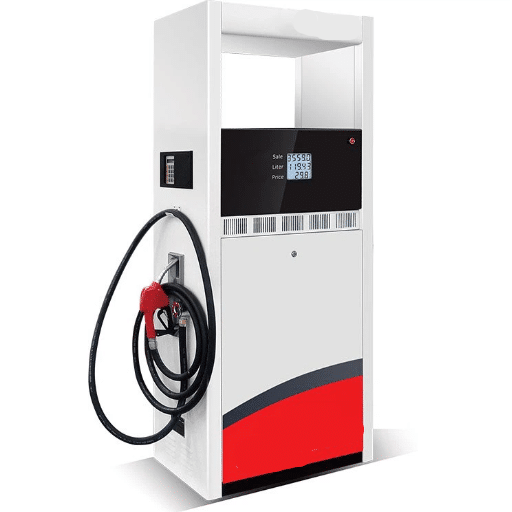
Mechanical and electric fuel dispensers rely on filtration to keep the fuel stream clear and dependable. A standard inline filter usually meets the needs of mechanical pumps because it can trap the larger debris that might otherwise enter the lines. Electric models often call for something more elaborate, even a multi-stage cartridge, since the finer grit that a high-pressure system generates can quickly degrade performance. Operators must check and change the media regularly; otherwise, clogs build up, parts wear out, and flow drops to an unacceptable level.
What is the function of the inline fuel dispenser cleaner?
An inline dispenser cleaner intercepts sediments and minute impurities before the fuel reaches the engine. Think of it as the first responder in the plumbing, catching bits of dirt, rust flakes, and stray water that sneak in during bulk storage or transport. Engines with tight tolerances, especially modern high-performance types, appreciate the extra protection because fewer particles mean less risk of blocked injectors or scratched pump interiors.
Last year’s innovations in engine-scavenging technology have pushed many products past their former limits. Several now rely on multi-layer filtration membranes that trap particles measuring 2 to 5 microns, an optical threshold most drivers will never see. Laboratory comparisons indicate that vehicles fed cleaner fuel can gain a 10 to 15 percent overall mileage bump while curtailing harmful tailpipe gases. Fuel-rail additives, placed inline, further guard metal and polymer surfaces by staving off the carbon and gum buildups that inflate workshop invoices. Changing cartridges on schedule and following manufacturer torque specs remain the simplest ways to keep every system working as designed.
How to ensure proper fuel filtration
An untroubled engine usually begins with spotless fuel. Good filtration keeps combustion smooth, spares pumps and injectors from early retirement, and cuts the odds of wrenching surprise bills.
Use High-Quality Fuel Filters: Even the best gasoline cannot outrun a second-rate filter. Sourcing a heavy-duty cartridge rated for the exact model in hand allows the unit to snag grit, rust, and microscopic flecks that many parts cannot tolerate.
Adhere to Scheduled Filter Replacements: Mileage numbers in the service manual are more than suggestions. Leaving a clogged insert in place invites starvation, awkward stumbling, and possible damage that the next owner will pay to fix.
Perform Routine Inspections: Dirt, water, or both can hitch a ride before anyone turns a key. A brief look at bowl glass, sight gauges, and gravel catch pots usually provides an honest report card.
Utilize Clean and Properly Stored Fuel: A five-gallon can, streaked with moisture and patio dust, guarantees trouble long before it reaches the injector. Keeping fuel in dry, sealed cans and checking for haze or odor every few months makes the entire chain more secure.
Multi-Stage Filtration Advancements: Contemporary multi-stage filtration setups pair a coarse primary filter with a finer secondary element, geometrically improving dirt and water capture. Such hybrid assemblies calm pressure spikes, shield injectors from damage, and promote uniformly clean combustion.
When vehicle caretakers regularly upgrade and inspect these tiers, fuel economy can rise by as much as 10 percent, and extended service intervals become routine in practical terms, translating into noticeable dollar savings on parts and labor.
Choosing Between Mechanical Fuel Pump vs Electric Fuel Pump

Selecting a fuel-pump type is more than spare-parts shopping; it is a question of system compatibility. Mechanical pumps- spring-loaded, diaphragm-driven, and directly tethered to the engine- fuel through older carbureted drivetrains like a heartbeat. The design promises unwavering reliability in vehicles that barely register electronic codes, though the pumps wilt under the elevated pressures that modern fuel-injection mandates.
Electric pumps, by contrast, draw solely on the battery and deliver fuel at a steady rate, whether the engine is idling or tearing down a highway. Their independence of crank speed allows seamless pressure headroom for performance builds, yet their versatility hikes parts expense and complexity in wire installation.
Restore a classic coupe with a mechanical pump for charm and simplicity, or modernize a fuel-injected project with an electric unit when horsepower and higher rail pressure rule the day.
Considering Fuel Delivery Needs
Selecting the correct fuel pump begins with a firm grasp of your engine’s delivery requirements. Carbureted systems rely on mechanical pumps that typically output 4 to 7 PSI; that modest pressure suffices for the traditional float-and-jet arrangement found in most carburetors. By contrast, contemporary fuel-injection setups demand a far heftier stream, usually between 40 and 60 PSI, so electric pumps have become the industry standard for those applications. The electric design maintains pressure even during wide-open-throttle runs when engine workload peaks.
In tuning circles, many builders swear by electric units, reporting gains in both fuel economy and outright power. The steady flow gives injectors better atomization, translating to cleaner combustion and reduced tailpipe soot. Modern modules are anything but basic; they often include built-in pressure regulators, thermal cutoffs, and even crash sensors to shut off the pump if an impact ruptures the line. Matching that level of safety and performance to the original-spec numbers in your service manual ensures the upgrade pays off without introducing new headaches.
Impact on Engine Performance
At its basic level, the fuel pump is the engine’s lifeline, pushing gasoline or diesel through the lines and into the combustion chamber. When that delivery is steady and precise, the air-fuel mix burns cleanly; the entire firing sequence can stumble when it wavers. Most contemporary electric pumps work in the 40-to-70-psi range, a corridor that comfortably serves even the most stressed power plants in racing or towing scenarios.
Field reports show that even slight pressure leaks- an aging seal or a worn rotor- can manifest as hesitation under throttle or that dreaded mid-range misfire. Some dyno tests suggest that a 10-percent dip in pressure can shave nearly a quarter of the horsepower from an otherwise healthy V8. Many OEM units now use variable-speed motors that ramp flow up or down in real time to counter such pitfalls, smoothing out performance and trimming fuel waste.
A fuel pump that operates correctly plays a direct role in curbing tailpipe emissions. Even fuel distribution into the combustion chamber permits a complete burn, limits unconsumed hydrocarbons, and thus helps automobiles meet demanding regulatory thresholds. Swapping in a well-made unit promotes steady engine behavior, extends service life, and lessens the vehicle’s environmental footprint. Drivers chasing extra power often consider aftermarket pumps calibrated for elevated horsepower; these systems deliver larger volumes of gasoline yet hold pressure steady across the broad RPM and load spectrum that performance applications produce.
Cost Considerations and Fuel Pump Longevity
Costing a new fuel pump is rarely as straightforward as choosing the smallest figure in a price list. Buyers should fold future gains into the equation, watching for the boost in miles-per-gallon and the dip in shop visits that a fresh unit sometimes supplies. Parts journals cite a neighborhood range of four hundred to eight hundred dollars for a standard swap; tuners or race-spec hardware can vault past the thousand-mark almost in a breath. Vehicle brand, assembly plant decisions, and whether the part wears an OEM badge or a third-party logo push an already wide spread even farther apart.
Life expectancy leans heavily on the driver’s behavior and whether the fuel-delivery system sits on a steady diet of clean, healthy juice. Under everyday use, many operators still see the hundred-thousand-mile barrier roll by with little more than routine filter swaps. Keeping the tank above one-quarter full, avoiding shady fill stations, and changing clogged screens often enough pay off in longevity that most calculators miss. Engineers also whisper about improved plastics and upgraded windings inside the pump itself, hints that suggest the replacement cycle of the twenty-first century could not be the same beast as the last. Smart maintenance plays its part, yet reliable upgrades tilt the odds in favor of frugal owners who mind the details.
Reference Sources
Comparative Risk Study of Hydrogen and Gasoline Dispensers
IoT-Based Smart Fuel Filling System for Efficient Resource Management
Smart Fuel Dispenser Using RFID and IoT-Based Monitoring
Frequently Asked Questions (FAQs)
Q: What is the main difference between a mechanical and an electrical fuel pump?
A: The main difference between mechanical and electrical fuel pumps is their operation method. The engine’s crankshaft drives mechanical pumps and relies on a vacuum to move fuel. In contrast, a motor drives electrical pumps and can deliver fuel at higher pressures, making them suitable for direct fuel injection systems.
Q: How do mechanical and electrical fuel pumps work?
A: Mechanical fuel pumps use the engine’s crankshaft to create a vacuum that powers the pump, moving fuel from the gas tank to the engine. Electrical pumps, however, use electric power to drive a motor that moves fuel, allowing for more flexible placement and higher pressure output, which is essential for EFI systems.
Q: What are the benefits of using an electric pump over a mechanical one?
A: Electric pumps offer several benefits over mechanical pumps, including higher fuel pressure, greater reliability, and the ability to be mounted in various locations, such as in-tank configurations. They are more suitable for modern fuel injectors and can better handle the demands of high-performance engines.
Q: Why might one choose a mechanical fuel pump instead of an electric one?
A: Mechanical fuel pumps are often chosen for their simplicity, reliability, and lower cost. They do not require an electrical system to operate, reducing the risk of fire hazards associated with electrical fuel components. They are also easier to maintain and repair in older vehicles with carburetor systems.
Q: What role does a fuel filter play in pump filtration?
A: A fuel filter is crucial in pump filtration to prevent contaminants from reaching the engine. Both mechanical and electric pumps use filters to ensure that only clean fuel is delivered to the engine. Inline fuel filters and pre-filters are standard configurations that protect the fuel injectors or carburetor from debris.
Q: How does vapor lock affect mechanical vs. electric fuel pumps?
A: Vapor lock occurs when fuel vaporizes in the line, disrupting fuel flow. It typically affects mechanical pumps more than electric ones. Mechanical pumps near the engine are more heat-resistant, leading to vapor lock. Electric pumps, especially in-tank types, are less prone to this issue due to their cooler operating environment.
Q: What is the importance of proper fuel pressure in mechanical vs. electric fuel pump systems?
A: Proper fuel pressure is essential for engine performance. Mechanical pumps typically deliver lower pressures suitable for carburetors, while electric pumps provide the higher pressures for EFI systems. Inadequate pressure can result in poor engine performance or failure to run efficiently.
Q: Can mechanical and electrical fuel pumps be used together?
A: Yes, mechanical and electrical fuel pumps can be used in some systems. Depending on the specific needs and design of the fuel delivery system, a mechanical pump can provide fuel to an electric pump or vice versa. This setup can offer redundancy and flexibility in fuel management systems.
Q: What are the fire risk factors associated with electrical fuel pumps?
A: Electrical fuel pumps pose a fire risk due to their reliance on an electrical system. Faulty wiring, short circuits, or pump failures can lead to sparks or overheating, increasing the chance of fire. Proper installation and maintenance are crucial to mitigate these risks.

